Trailblazing Filmmakers of the Treasure State
From wannabes to veteran professionals, Montana filmmakers are busy in every corner of the state. But how come I don’t see their films, you may wonder? While some make it to the big screen, others depend on film festivals organized by film lovers, Internet sites, mobile Apps, and MontanaPBS (think Butte America by Pam Roberts, Class C by Justin Lubke, Wolverine: Chasing the Phantom by Gianna Savoie, and In the Valley of the Wolves by Bob Landis).
No doubt Buck (directed by Cindy Meehl) came to a theater in your town as it is about the man known as the “horse whisperer,” Buck Brannaman, who has helped solve horse/human relationship problems all over Montana—and the world. The film shows popular clinics in Libby and Sheridan as well as clips with Buck’s family, Robert Redford, and Buck’s superior skills at riding, cuttin’ cattle, and roping. Brannaman, an MSU graduate, was recently awarded an honorary doctorate in equine science.
A winter’s week-long feast for movie lovers is the Big Sky Film Institute’s hosting of documentary films held annually in Missoula. Here you will find top quality films. One screened was Chris Eyre’s A Thousand Roads, which became the signature film for the National Museum of the American Indian. The call for 2012’s entries is now on—see www.bigskyfilm.org.
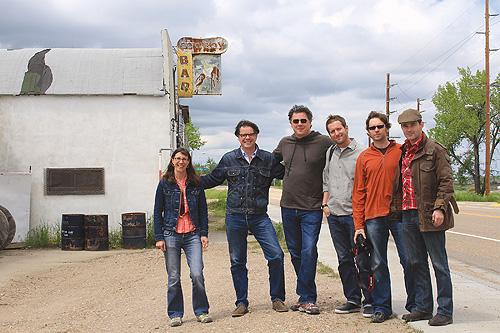
High expectations abound for Winter in the Blood, based on the novel by Montana’s prominent Blackfeet/Gros Ventre novelist, James Welch. The movie’s visionaries are Alex & Andrew Smith, directors/writers/producers, with a script written by Ken White (also a co-producer). Many of the crewmembers are Montanan. “We’ve just tapped a vein of ‘oro y plata’ all the way down the line,” Andrew Smith said. Because Montana is so central to the story, the crew is committed to shooting around Havre and Malta rather than take financial incentives in Canada. As most of the story was heavily drawn from Welch’s life, growing up on a ranch on Fort Belknap, the Smiths say that they couldn’t imagine filming this novel anywhere else but here, and on the Hi-Line in particular.
Not surprisingly Native American themes and Montana fit well together. Other forthcoming films from our groundbreakers include:
Last Man Stands — it focuses on a fictional Crow youth and his family. Producer Petra Ahmann, a 2004 graduate of Laurel High School, hopes to shoot in Laurel, Hardin, the Crow Reservation, and other local spots.
Moonhair will star an all-Native American cast.Author Jack (“Happy”) Feder was inspired to write a mythic adventure movie set during the Dog Days, but told in a modern style. Feder said, “My goal was not to have a political message—but an adventure.” Inspired by traditional Native American myths, the story is an original tale of a woman with shocking white hair that carries untold powers. Moonhair must take a dangerous journey as she tries to retrieve her tribe’s Singing Buffalo Stone from an evil neighboring tribe—the Dung Eaters. Without the stone, the tribe can’t hunt and will perish. A trickster god creates problems for Moonhair. Feder based much of the myth on Blackfeet history and folklore and shot the story on the Rocky Mountain Front near Choteau, Augusta, and on the Blackfeet Reservation. Visit www.moonhairfilms.com to see the film’s teaser.
Westerns are another natural theme for Montana. Shot in Dillon this past year, Cooper is about a ranch hand from a proud family. In tough times, Rick, the brash eldest Valas son turns to cattle rustling. Before long he brings his younger brother JD and Cooper into the fold. When Rick is caught and is run into the mountains, it is the younger boys who are left to deal with the aftermath.
Filmmaker Andrew Wiest’s Treasure State features the story of two teenage boys, Levi Hogue and Trey Stanton, whose families are both dealing with financial blows. They set off separately on searches for valuable cargo from a plane that has crashed in the snow-covered wilderness of Montana, all the while fending off the villains who caused the accident. The film fills Wiest’s desires to make a family-friendly action picture featuring young people in peril, and a tribute to the Western landscape and lifestyle.
To attract investment dollars that will ease the way to widespread distribution, young filmmakers capitalize on the horror/vampire fads for their flicks. For instance, a group of young Helena-based filmmakers wants “to leave its audience speechless in their seats.” They’re shooting a pro-grade, epic sci-fi drama about vampires and the humans who encounter them. The core team includes Bryan Ferriter (director, lead writer, and lead vampire), plus a number of Carroll College students. Vampire will have scenes shot from a helicopter and inside an underground cavern and other big-production elements, which they say will make the movie more appealing to distributors when it comes time to bring the project to Hollywood.
A positive indicator for Montana’s economy is the number of commercials shot at locations around the state. According to Bozeman’s Tina Buckingham, who scouts talent for commercials and trains actors through the Film Actors Studio, the situation shows increasing energy. See http://mtactorsstudio.ning.com. These commercial films are often made by the branding/design studios, where the talent works with state-of-the-art video and sound equipment daily.
Montana State University’s School of Film and Photography School is a major player in the film scene. It offers programs for students seeking a BA with an emphasis in Motion Picture/Video/Theatre or Photography. This year a feature film made by former students, Prairie Love, premiered at the prestigious 2011 Sundance Film Festival in Utah. Selection to Sundance launches a filmmaker’s work into the world of contemporary independent filmmaking.
MSU also operates the world’s first MFA of Fine Arts in Science and Natural History Filmmaking. Many graduates go on to make films for the Discovery Channel and National Georgraphic. Ian Kellett of Livingston, for instance, filmed tiger sharks in Australia and new primate species in Bolivia.

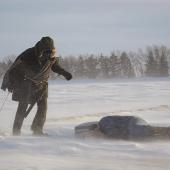


“Anyone can pick up a camera and theoretically make a film, but they are not necessarily filmmakers. This program, however, turns people with strong science backgrounds into powerful, visual storytellers—into filmmakers, and that is what science and natural history films need now more than ever. The program forever changed the way I, as a biologist, see the world. My production company, Conservation Media, is a direct product of this graduate program in every way.”
Jeremy R. Roberts, Director
MFA Science & Natural History Filmmaking
Owner/Producer, Conservation Media
MAPS Media Institute
Started by Peter Rosten, a Hollywood executive for 30 years, the MAPS after-school mission in Hamilton is to inspire, educate, and train Ravalli County high school students in multiple media courses and disciplines. Recently their 30-minute film, After the Bell: Inside the MAPS Media Institute, aired on PBS. They also created a film for this year’s Big Sky Documentary Film Festival, as well as another documentary on smoking that ran nationally. See www.mapsmediainstitute.org for more info about this worthy initiative.
Chisel Industries in Bozeman is one such firm. Director and founder, also an MSU graduate who went to L.A., Yarrow Kraner, is a principal player in Hatchfest, a nonprofit founded in 2004. More than a showing of film groundbreakers, HATCH also highlights innovators in music and offers seminars with accomplished professionals on writing, directing, design, architecture, and futurist technology. It premieres the next top independent films every fall. This year be part of the action October 5-9 in Bozeman. Enter the short film competition about how you drive your passion and maybe pocket a filmmaking package worth $10,000—see http://hatchexperience.com/filmmaking/.

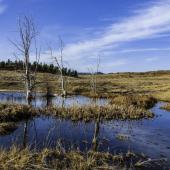
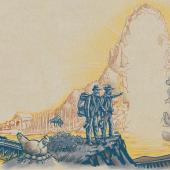

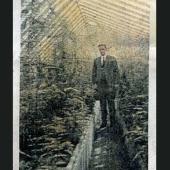
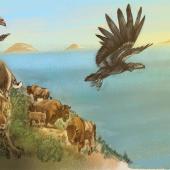
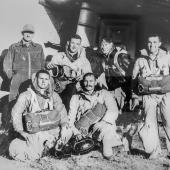

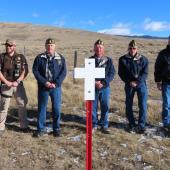



Leave a Comment Here